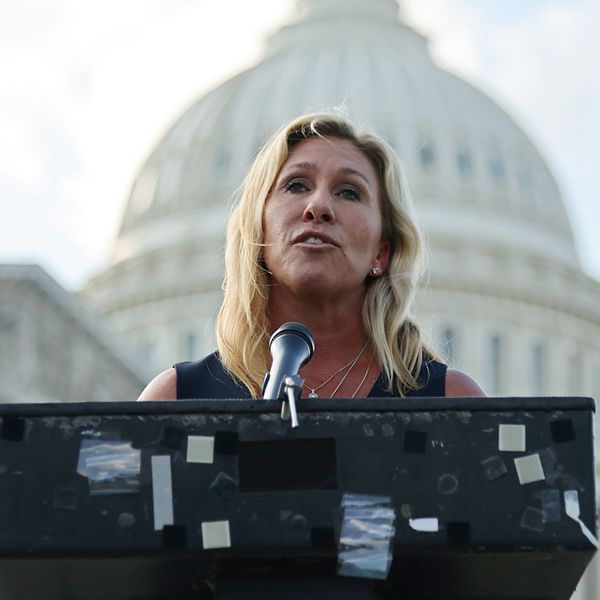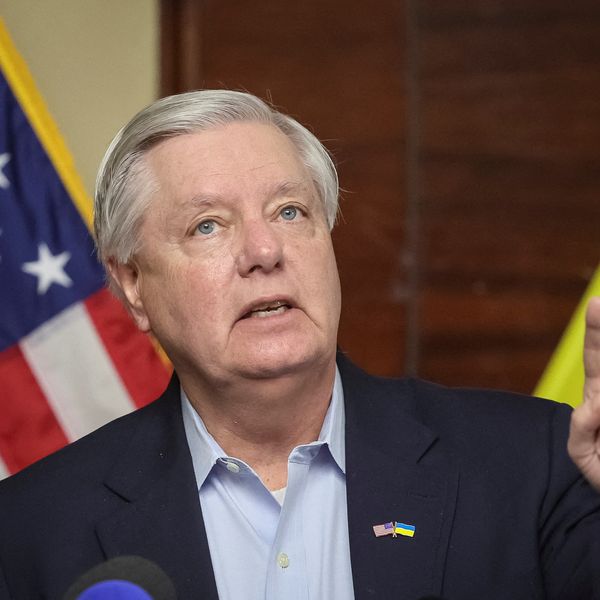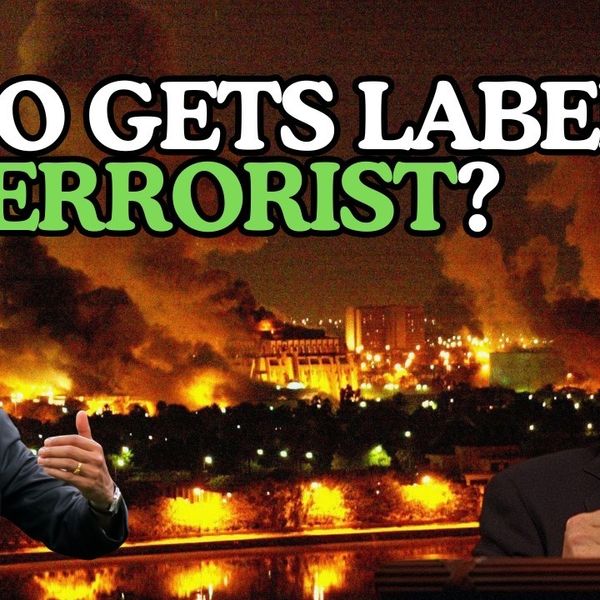The Saudis proposed conditions for a ceasefire to the Houthi movement on Monday but the conditions closely resembled what had been previously offered. More importantly, the Houthis are winning Yemen’s civil war, so without sufficient incentive, they are likely to continue their push to seize the strategic city of Marib anyway.
If the Saudis and the United States are serious about implementing a ceasefire, they will have to significantly alter their approach, namely, by lifting the blockade that is starving Yemen.
Saudi Foreign Minister Prince Faisal bin Farhan said that Saudi Arabia was prepared to allow Sana’a International Airport to reopen for some flights, as well as to permit some goods to enter the port of Hodeidah if the Houthis agreed to a full ceasefire overseen by the United Nations. The proposal called for “depositing customs and tax revenues for ships carrying oil derivatives to the port of Hodeidah in the joint account of the Central Bank of Yemen,” a crucial step to restarting Yemen’s economy and paying the salaries of public employees who have not been paid for years. The conditions included negotiations under the terms of U.N. Security Council Resolution 2216, which requires the Houthis to give up their weapons and abandon the territory they seized. Unsurprisingly, the Houthis rejected the proposal, stating that it offered “nothing new.”
The ceasefire terms resembled those recently proposed by U.S. Special Envoy to Yemen Tim Lenderking, as well as a proposal put forward by the U.N. in April 2020. The U.N. initiative came after a unilateral Saudi ceasefire announced on April 8, 2020, which immediately broke down. The Houthis rejected all of these, and instead continue to insist that the Saudi and U.S.-imposed blockade must be lifted before they will agree to a ceasefire, while the Saudis and the Yemeni government demand a ceasefire prior to granting concessions.
However, given the Houthis’ recent gains in their ongoing effort to capture the strategically significant city of Marib, even a unilateral lifting of the blockade might not convince them to pause their assault now.
Marib possesses crucial oil and gas reserves and infrastructure, as well as weapons. The city has offered a haven to Yemenis fleeing violence and abuse elsewhere, including many who oppose Houthi rule. The Houthi attacks threaten to displace over a million people into the desert, driven both by violence and fear of Houthi persecution. The city represents the last stronghold of forces loyal to the internationally recognized and Saudi-backed government of President Hadi, who himself remains in exile in Riyadh. If the Houthis take Marib, they will consolidate control over much of the former north Yemen, and effectively neutralize the Hadi government. They will then be in a position to rule the north while the Southern Transitional Council, with the backing of the UAE, governs the former south Yemen.
The Houthis have gained strength over the six years of war, attracting additional support from Iran, as well as from Yemenis desperate to feed their families and willing to work for whomever will pay. From the Houthis’ perspective, they have little incentive to cease military action now. The Houthis benefit from the war as well as from the blockade, which reinforces their control of the few resources that do arrive in their territory. The Houthis also benefit from portraying themselves as protecting Yemen from foreign intervention. This narrative resonates with many Yemenis, who are frustrated by decades of Saudi interference in their affairs as well as U.S. drone strikes intended to kill members of al-Qaida but that also kill civilians. Six years of devastating air strikes and the Saudi/U.S. blockade reinforce the Houthis’ account: that they defend Yemen against foreign aggression. Lifting the blockade and ending Saudi bombardment would undermine the Houthis’ legitimating narrative, prompting further discontent with their inability to govern effectively and their many abuses of civilians.
Given that the recent ceasefire proposal largely reasserts offers that were already on the table, it is likely that the Saudis’ primary objective was to demonstrate that they are trying to resolve the conflict, therefore shifting blame for ongoing hostilities to the Houthis. Using his State Department Twitter account, Lenderking tweeted support for the Saudi ceasefire. Yet if the Saudis and the United States were actually dedicated to ending the war and “easing the suffering of the Yemeni people,” as Lenderking’s tweet stated, they would lift the blockade that continues to starve Yemenis of food and fuel. Instead, the Saudis have escalated air strikes on Yemen, striking Sana’a as well as the grain port of Salif, further exacerbating food insecurity.
In general, the Saudis and the Hadi government continue to act as if they have the upper hand. The United States buys into this fiction while also pretending to be a neutral arbiter, rather than acknowledging that it overtly supports one side in the conflict and lacks all credibility with the other. If the Biden administration is serious about trying to resolve the conflict in Yemen, the United States cannot so blatantly support the Saudis.
The longer the war goes on, the weaker the Hadi government’s position becomes, while the Houthis grow stronger. Although the Saudis seem to hope that this dynamic will shift, all parties must recognize that the Houthis continue to improve their position. Similar to the Taliban in Afghanistan, the Houthis have a stronger interest in their homeland than any foreign invader will.
Yemen’s situation demonstrates, yet again, that foreign military interventions are generally more lengthy and costly than the intervener anticipated. Furthermore, that foreign intervention can actually undermine the initial objective. In the Saudis’ case, they feared Iranian involvement in Yemen. When the Saudis launched Operation Decisive Storm against the Houthis six years ago, Iranian support for the Houthis was negligible, yet as the Iranians discovered, supporting the Houthis offered a golden opportunity to goad the Saudis into spending more resources and attention on Yemen. Now Iranian support for the Houthis is significantly more robust.
Hopefully Saudi Crown Prince Mohammed bin Salman may have learned not to emulate America’s willingness to launch unnecessary foreign military interventions. But the entire population of Yemen has had to pay for this hard lesson, many with their lives.















